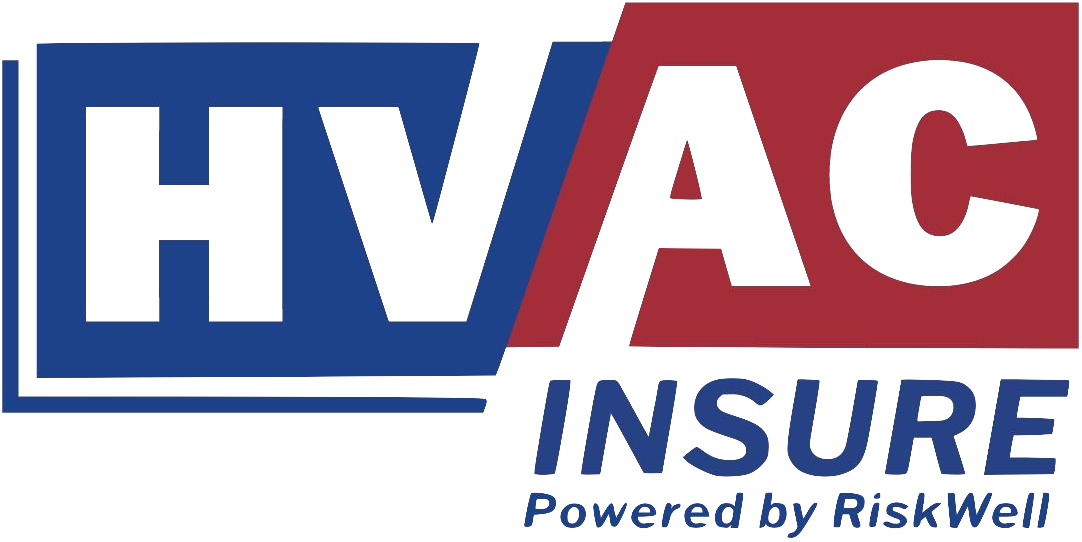Pay As You Go Workers Compensation Plans for HVAC Companies
See How We're Different
or call us: (469) 678-8001

For HVAC contractors, managing workers compensation insurance can feel like navigating a maze. Premiums fluctuate, claims can be costly, and the risk of underinsurance looms large. Traditional workers comp plans often require upfront payments based on estimated payroll, which can strain cash flow and leave businesses exposed to surprises. Enter pay as you go workers compensation plans-a flexible alternative that aligns costs with actual payroll, offering HVAC companies a smarter way to manage risk and expenses.
With the HVAC industry facing a critical shortage of skilled technicians-expected to reach 225,000 by 2025-retaining experienced workers while controlling insurance costs is more important than ever. Pay as you go plans help contractors stay agile amid these challenges. Learn how this approach works, why it matters for HVAC businesses, and what to watch out for when choosing coverage
How Pay As You Go Workers Compensation Works
Pay as you go workers compensation insurance is designed to match premiums with real-time payroll data. Instead of paying a lump sum based on projected wages, HVAC companies submit payroll reports—often monthly or quarterly—and pay premiums accordingly. This method reduces the risk of overpaying or underpaying at the end of the policy period.
This system benefits contractors with seasonal or fluctuating work schedules, common in HVAC services. For example, warmer summers can spike HVAC failures by 20 to 30 percent, increasing demand for technicians during peak months. Pay as you go plans adjust premiums to reflect these seasonal swings, preventing costly upfront estimates that don’t match actual labor costs.
By syncing insurance payments with payroll, HVAC companies gain better cash flow management and avoid large year-end audits or unexpected bills. This transparency also helps contractors budget more accurately throughout the year. Furthermore, the ease of reporting payroll on a more frequent basis allows businesses to stay agile, making it easier to adapt to changes in workforce size or project demands without the stress of financial penalties or miscalculations.
Why HVAC Companies Should Consider Pay As You Go Plans
HVAC businesses operate in a high-risk environment. Claims average between $25,000 and $50,000, with over 25,000 incidents annually costing the industry more than $1 billion in losses. Given these stakes, having workers compensation coverage that adapts to actual exposure is crucial.
Traditional workers comp policies often require estimates that can be off by thousands of dollars, especially for companies with fluctuating payrolls. Pay as you go plans eliminate guesswork. This is particularly valuable in states like California, where HVAC contractors typically pay between $213 and $223 per month for workers compensation insurance, depending on payroll and risk factors. The ability to adjust premiums in real-time means that contractors can focus more on their core operations rather than worrying about potential financial pitfalls due to inaccurate payroll estimates.
Additionally, about 40 percent of contractors underinsure, risking out-of-pocket expenses exceeding $40,000. Pay as you go plans encourage accurate reporting and coverage levels, reducing the chance of costly gaps in protection. This proactive approach to insurance not only safeguards the business but also enhances employee morale, as workers feel more secure knowing that they are adequately covered in case of an accident or injury. Moreover, with the added layer of financial predictability, HVAC companies can invest in other critical areas such as training, equipment upgrades, or marketing, ultimately leading to a more robust business model.
Learn more about how seasonal work impacts insurance costs here.
Benefits of Pay As You Go for Managing Risk and Cost
One of the biggest advantages of pay as you go workers compensation is its alignment with actual risk exposure. HVAC companies often face variable workloads due to weather, economic cycles, and equipment failures. This variability makes fixed premium payments less practical.
With pay as you go, premiums rise and fall with payroll, so contractors pay only for the coverage they need. This flexibility can lead to significant savings during slower periods without sacrificing protection when business picks up.
Moreover, companies with comprehensive safety programs see up to a 40 percent decrease in workplace injuries and claims. Pay as you go plans can complement these efforts by encouraging accurate payroll tracking and timely reporting, which supports better claims management and risk assessment.
Wearable technology and IoT devices have also contributed to a 15 percent drop in injury rates in high-risk industries since 2020. HVAC contractors investing in such innovations can pair these safety gains with pay as you go plans to optimize insurance costs further.
Discover how injury prevention can reduce claims frequency here.
Cash Flow and Administrative Advantages
Pay as you go plans simplify accounting by eliminating large upfront premium payments and year-end audits. Instead, premiums are deducted based on actual payroll data, often through integrated payroll systems or third-party administrators. This automation reduces administrative burden and errors.
For HVAC contractors managing tight margins, predictable monthly payments improve budgeting and reduce surprises. It also helps businesses avoid penalties or interest charges associated with late premium payments or inaccurate estimates.
In states like California, where workers compensation rates have historically risen sharply—for instance, roofer rates jumped from $12.43 per $100 of payroll in 1995 to $45.19 in 2002—pay as you go plans provide a way to stay financially nimble amid market fluctuations. This adaptability is crucial for HVAC businesses that must remain competitive while navigating the complexities of labor costs and insurance premiums.
Additionally, the integration of pay as you go systems often leads to enhanced financial visibility. Contractors can access real-time data on their insurance costs, allowing for more informed decision-making regarding workforce management and project bidding. This level of insight can significantly enhance operational efficiency, as businesses can allocate resources more effectively based on current financial obligations and projected workloads.
Furthermore, as the construction industry increasingly embraces digital transformation, the ability to seamlessly integrate pay as you go plans with other financial tools can create a more cohesive financial ecosystem. This not only streamlines operations but also fosters a culture of proactive risk management, where businesses can continually assess and adjust their strategies based on the latest data and trends in their specific market environments.
Common Challenges and How to Overcome Them
While pay as you go workers compensation offers many benefits, it is not without challenges. Some contractors worry about the accuracy of payroll reporting and potential audits. Since premiums depend on reported wages, underreporting can lead to penalties or coverage gaps.
To avoid this, HVAC companies should maintain meticulous payroll records and work with insurers or brokers who provide clear guidance on reporting requirements. Using integrated payroll and insurance platforms can streamline this process and reduce errors. Additionally, investing in training for staff on proper payroll practices can further minimize discrepancies, ensuring that all reported wages reflect the actual work performed. This proactive approach not only helps in compliance but also fosters a culture of accountability within the organization.
Another concern is the potential for fluctuating premiums to complicate cash flow planning. However, many pay as you go plans offer monthly payment options that smooth out costs over time, making budgeting easier. HVAC companies can also explore the possibility of establishing a reserve fund to cushion against unexpected premium increases. By setting aside a small percentage of monthly revenue, businesses can create a financial buffer that allows them to manage cash flow more effectively, even during peak seasons or economic downturns.
About 8 percent of workers compensation claims are denied annually due to issues like insufficient medical evidence or late filing. Accurate and timely reporting under pay as you go plans can help mitigate these risks by ensuring claims are properly documented and processed. Furthermore, educating employees about the claims process and their rights can empower them to advocate for their needs, reducing the likelihood of claim denials. Regularly reviewing and updating internal procedures for handling claims can also enhance the overall efficiency of the process.
Learn more about denied claims and their causes here.
Is Pay As You Go Right for Your HVAC Business?
Pay as you go workers compensation plans suit HVAC companies with variable payrolls, seasonal work, or rapid growth. Smaller contractors or those with stable payrolls may find traditional policies simpler, but the flexibility of pay as you go often outweighs this. It allows businesses to align their insurance costs directly with their operational needs, which can be particularly advantageous during off-peak seasons when payroll may decrease significantly.
Consider your business size, payroll variability, and administrative capacity when evaluating options. Consulting with an insurance expert familiar with HVAC risks can provide tailored advice. Additionally, it may be beneficial to network with other HVAC professionals to share insights and experiences regarding different coverage options. This peer support can lead to valuable recommendations and strategies that can enhance your understanding of the insurance landscape.
Remember, underinsuring remains a major hazard—40 percent of contractors face significant out-of-pocket losses due to insufficient coverage. Pay as you go plans encourage accurate coverage that scales with your workforce. Regularly reviewing your coverage needs as your business evolves is crucial. This ensures that as you take on new projects or hire additional staff, your insurance remains adequate to protect both your employees and your business assets from unforeseen incidents.
What to Expect in 2025 and Beyond
The HVAC industry is projected to grow to a $94.71 billion market by 2030, expanding at a 6.28 percent compound annual growth rate. This growth, combined with rising workers compensation costs-up 50 percent in the last three years-means insurance strategies must evolve.
Warmer summers and record heat waves are increasing HVAC failures, property damage claims, and pollution liability risks. Contractors should expect claims averaging $25,000 to $50,000 each, with over 25,000 incidents annually. Managing these risks with flexible insurance like pay as you go plans will be critical.
Integrating safety programs, wearable tech, and accurate payroll reporting will help HVAC companies control costs and protect their teams. Staying informed about market trends and insurance innovations can turn workers compensation from a cost center into a strategic asset.
Explore the 2025 HVAC insurance market outlook here.
Comparison of Workers Compensation Payment Methods
| Payment Method | Premium Calculation | Cash Flow Impact | Best For |
|---|---|---|---|
| Traditional Annual Premium | Based on estimated payroll at policy start | Large upfront payment, possible year-end audit adjustments | Stable payroll, predictable workloads |
| Pay As You Go | Based on actual payroll reported periodically | Smaller, more frequent payments aligned with payroll | Variable payroll, seasonal work, growing businesses |
As the HVAC landscape continues to evolve, contractors must also consider the impact of technological advancements on their operations. The integration of smart HVAC systems not only enhances energy efficiency but also provides real-time data that can assist in predictive maintenance. This proactive approach can significantly reduce the risk of equipment failures and the associated claims that arise from them. Moreover, as more consumers become environmentally conscious, the demand for eco-friendly HVAC solutions is likely to surge, prompting contractors to adapt their offerings accordingly.
Additionally, the labor market is experiencing shifts that could affect the HVAC industry. With an aging workforce and a shortage of skilled labor, companies may need to invest more in training and development programs to attract younger talent. Emphasizing safety and providing competitive benefits will be essential in retaining skilled workers. As these dynamics unfold, HVAC businesses that prioritize workforce development and embrace innovative technologies will be better positioned to thrive in the competitive market of 2025 and beyond.
Frequently Asked Questions
Q: How does pay as you go workers compensation benefit HVAC companies?
A: It aligns insurance premiums with actual payroll, improving cash flow and reducing the risk of overpaying or underpaying. This model allows HVAC companies to better manage their finances, as they only pay for what they use. By linking premiums directly to payroll, businesses can allocate resources more effectively, ensuring that funds are available for other critical operational needs, such as equipment maintenance or employee training. This flexibility is particularly beneficial for small to medium-sized HVAC firms that may not have the financial cushion to absorb unexpected costs.
Q: Can pay as you go plans handle seasonal fluctuations in HVAC work?
A: Yes. Premiums adjust with payroll, so coverage costs reflect busy and slow seasons accurately. This adaptability is crucial for HVAC companies that experience significant variations in workload due to seasonal changes or economic factors. For instance, during peak summer months, when air conditioning services are in high demand, companies can ramp up their workforce without the fear of being locked into a fixed insurance premium. Conversely, during the winter months, when work may slow down, they can reduce their payroll and, consequently, their insurance costs, allowing for more strategic financial planning.
Q: What happens if payroll is underreported in a pay as you go plan?
A: Underreporting can lead to penalties, coverage gaps, or audits. Accurate payroll reporting is essential. It’s important for HVAC companies to maintain meticulous records of employee hours and wages to avoid these pitfalls. Regular audits of payroll data can help ensure compliance and prevent any discrepancies that might arise. Additionally, many insurers provide tools and resources to help businesses track their payroll accurately, making it easier to stay on top of reporting requirements and avoid potential issues down the line.
Q: Are pay as you go plans more expensive than traditional workers comp?
A: Not necessarily. They often save money by preventing overpayment and offering flexible payment schedules. In fact, many businesses find that the ability to pay premiums based on real-time payroll data leads to significant savings over time. Moreover, the cash flow benefits of a pay as you go plan can allow HVAC companies to invest in other areas of their business, such as marketing or new technology, which can ultimately lead to increased revenue. This financial agility is a key advantage in a competitive industry.
Q: How can HVAC companies reduce workers compensation claims?
A: Implementing safety programs and using wearable tech can lower injury rates and claims frequency significantly. By fostering a culture of safety, HVAC companies can not only protect their employees but also reduce insurance costs in the long run. Training sessions that focus on proper lifting techniques, equipment handling, and hazard recognition can empower workers to take proactive measures against potential injuries. Additionally, the integration of wearable technology, such as smart helmets or vests that monitor environmental conditions, can provide real-time feedback to employees, further enhancing workplace safety and reducing the likelihood of accidents.
Q: Is pay as you go workers compensation available in all states?
A: Availability varies by state and insurer. Contractors should check with their insurance providers. Some states have more robust options for pay as you go plans, while others may have restrictions or limited offerings. It's advisable for HVAC companies to consult with local insurance agents who specialize in workers' compensation to understand the specific regulations and options available in their area. This ensures that they can make informed decisions that align with their business needs and comply with state laws.
Q: How do pay as you go plans impact year-end audits?
A: They typically reduce or eliminate large audits since premiums are based on actual payroll throughout the year. This continuous adjustment means that businesses are less likely to face unexpected charges at the end of the policy term. Additionally, the streamlined nature of pay as you go plans allows for easier tracking and reporting of payroll data, making the audit process more straightforward. HVAC companies can benefit from this reduced administrative burden, allowing them to focus more on their core business operations rather than getting bogged down in paperwork and compliance issues.











